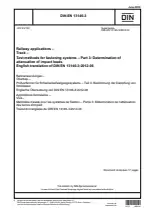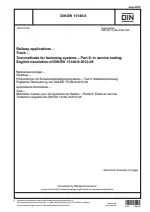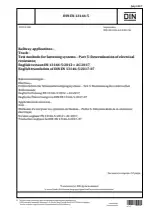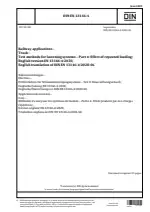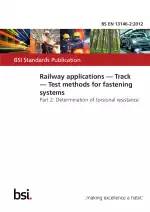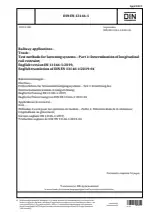Railway Applications - Track - Test Methods for Fastening Systems - Part 2: Determination of Torsional Resistance
Also Known As:
The DIN EN 13146-2 standard provides a specific laboratory test procedure for determining the moment required to rotate a rail through 1° in a plane parallel to the base of the rail. This test is conducted on a rail that is secured to a sleeper by a rail fastening assembly.
The purpose of this test is to measure the torsional resistance of the rail and fastening system. The obtained value can be used in track stability calculations, which ensure the safe and reliable functioning of the railway track. It is important to note that this test method is not applicable to embedded rail systems.
This standard applies to the complete rail fastening assembly and outlines the specific procedures to carry out the test. By defining the test method, this standard ensures consistent and reliable testing of rail fastening systems for track applications.
| Descriptors | Capacitive loads, Fasteners, Fixings, Laboratory testing, Permanency, Permanent ways, Quality requirements, Rail fastening systems, Railway applications, Railway construction, Railway installations, Railways, Sleepers, Testing, Torsion, Torsion testing, Torsion tests, Torsional strength, Torsional tests, Tracks (materials handling equipment), Travel ways, Superstructure, Durability, Ties, Sheets, Roadways, Pavements (roads) |
| ICS Codes | 93.100 - Construction of railways |
| Language(s) | English |
| File Size | 706.6 KB |


